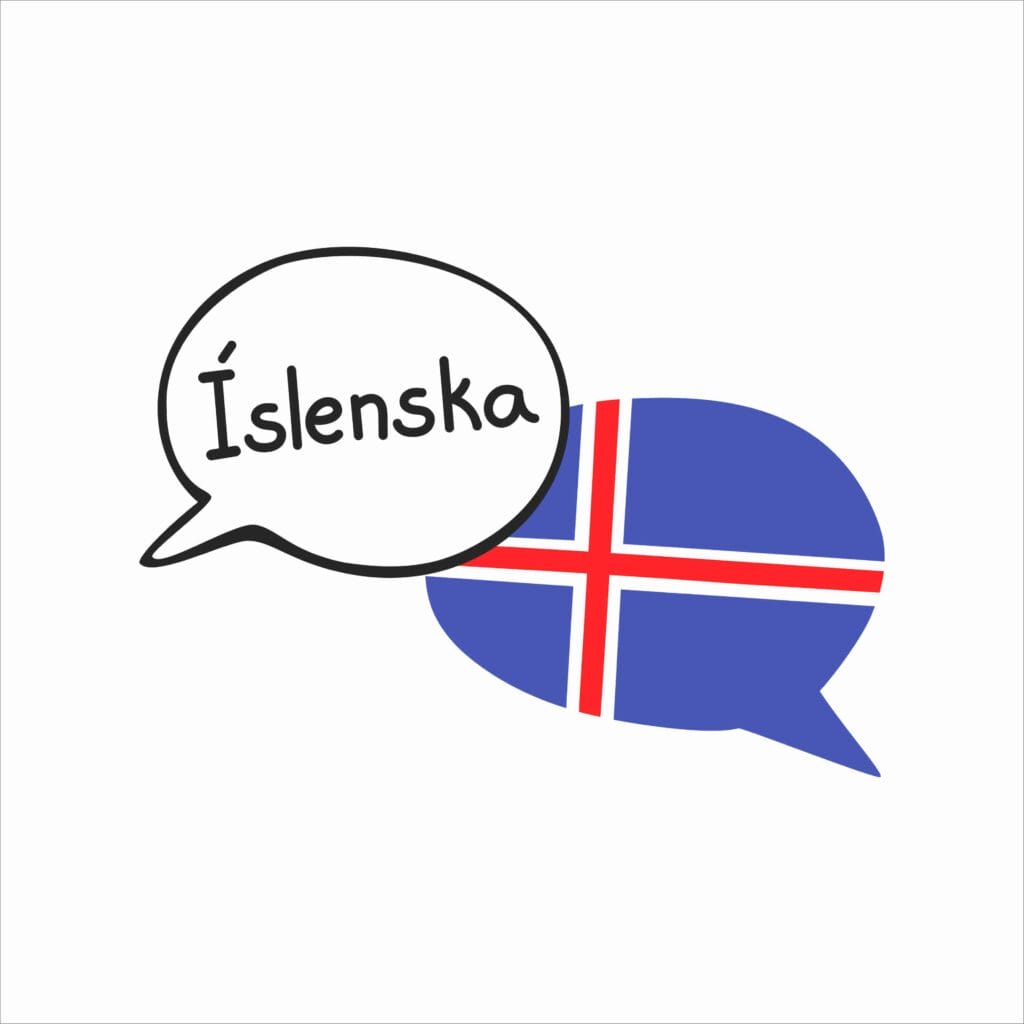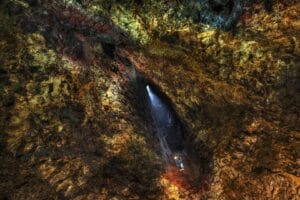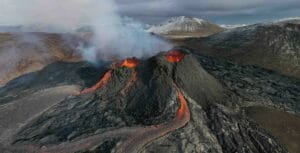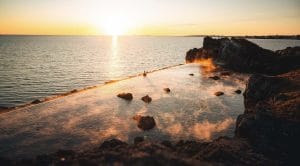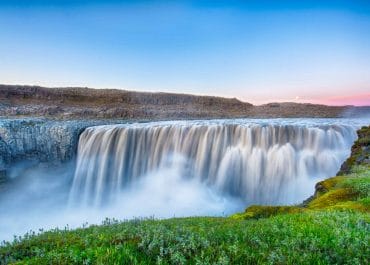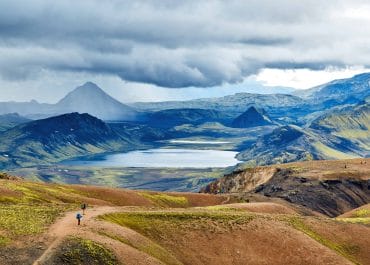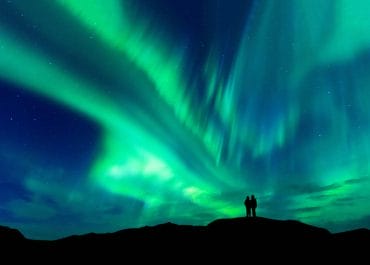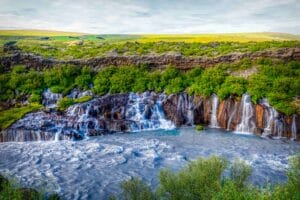One of the most difficult languages of the world, Icelandic, is today spoken by around 330,000 native speakers. This strange-sounding and hard to grasp language can perhaps be the most challenging task one can give to himself when it comes to learning a new language. Each Icelandic word takes a different meaning in a sentence that even gifted minds will struggle to comprehend in its true sense.
The official lingua franca of Iceland is Icelandic, which traces its origin from the North Germanic language family. For centuries, the language has preserved its originality without changing much even in modern times. That’s the reason, the words and pronunciation seem difficult for foreign visitors. For instance, could you pronounce Eyjafjallajökull? Congrats if you pronounced it correctly, if not, don’t worry. Even many news reporters failed to pronounce it correctly when the Eyjafjallajökull volcano erupted in 2010. The simple (for Icelanders) EYJA-FJALLA-JÖKULL became a tong-twister for many foreigners at that time. But is the Icelandic language that hard?
The Icelandic language is not as hard as Mandarin, or Japanese. But certainly not an easy one to master for English speakers as it’s relatively complicated sentence formation with hard to pronounce words. However, it doesn’t mean you couldn’t learn the basics of the language to get you around Iceland. Secondly, the travelers would find no difficulty in roaming around the country as most of the Icelanders are well versed in English. Let’s understand the Icelandic language’s history, phonetics, and basic terms and phrases, which will help and make you fall in love with this nature’s wondrous island and its culture.

Origin of Icelandic Language
The early settlement period on this island goes back to 870-930 AD. During this period majority of the settlers came from Nordic countries especially Norway and Sweden. Some of the settlers were also from Ireland as the Vikings made a stop in the British Isles before arriving at Iceland. As the majority of the settlers were from the Scandinavian region, the Germanic language became dominant. Thus, Icelandic belongs to the branch of the original Indo-European known as Germanic.
So Icelandic and Norwegian spoke the same language in the beginning, and probably the reason behind many Icelanders still can read the manuscripts written in Old Norse between the 10th and the 13th centuries such as the Eddas and Sagas. The separation between Norwegian and Icelandic appeared probably in the twelfth-fourteen century. Since then the two languages took a different route and today they sound very different from each other. Many Etymologists, however, believe that the root of modern Danish, Swedish, Norwegian, and Faroese is perhaps Icelandic.
Through the centuries, the Icelandic language has changed in terms of pronunciations and inflections. Many words from other languages (e.g., monks started to use Latin in the 12th century) were also incorporated over time, and even today new words are constantly produced while maintaining the originality of the language.
Icelandic Language Today
Icelanders take pride in their old language and culture. Every year on 16 November since 1996, “The Day of the Icelandic Language” is observed to celebrate their language and heritage that has not changed much in the last 1000 years. However, today most of the Icelanders speak many different languages especially English, and the government is taking numerous steps to preserve the language. The shrinking population of Icelanders speaking their national language motivated the government to set aside USD 4.48 million (every year).
Icelandic although remains the main language, English has become lingua-franca for several reasons. As tourism has become the main source of the economy, the use of English has become a necessity for Icelanders. Secondly, most of the modern technologies use English in their voice command and practical uses. The absence of Icelandic in these technologies has been considered a grave concern for the future of the language. Many linguists have cited concern and implicitly indicated Icelandic going the same route as Latin. Nevertheless, the language will remain intact till the time the local population finds a new way of preserving it and new generations reading the epic Sagas.

Other Languages that are close to Icelandic
All of the Nordic languages can be divided into two language families: North Germanic and Finno-Ugric. The former category consists of Danish, Norwegian, Swedish, and Icelandic. The latter includes only Finnish. Contrary to common belief, Finnish is the most distinct language among all the Nordic languages. A Finnish would struggle against Icelandic or Danish words.
Among all the Nordic languages, there is not as great similarity as between Icelandic and Faroese. People from both the islands may understand each other’s language as both have similar writing and spelling rules. However, when it comes to speaking, they are starkly different.
The second closest language would be Norwegian. As Danish, a compulsory subject in schools, most of the Icelanders can make sense of other North Germanic languages such as Norwegian and Swedish.
Can you learn Icelandic?
Simply no! The Icelandic language will make you sweat with its archaic vocabulary and complex grammar rules. For example, there is no such rule for altering the gender, you just have to know it. Secondly, there is no link between the written words and their pronunciation. And the time you think you have mastered the language; you will find another five exceptions to the same grammar rule.
Brave souls of course can overcome any difficulty. Once you make a little understanding of this linguistic puzzle, you may find the road becoming easier. If you use common sense and do a little linguistic math, all those big, hard to pronounce words, might become easy to understand.
For example, the word for an umbrella in Icelandic is regnhlíf, which is made up of regn (rain) and hlif (coverage). Similarly, ísskápur (refrigerator) = ís (ice) + skapur (closet); dýragarður (zoo) = dýr (animals) + garður (garden). As you could see, Icelandic is a very see-through language. With knowledge and little logic, you could probably sail through this Icelandic jungle of slightly uncomprehending- words.
If you are up for the challenge, many apps and websites offer courses in Icelandic. For example, icelandiconline.com and italki.com are helpful online resources to learn the language. And if you happen to be in Iceland, you can attend courses provided by Tin Can Factory.
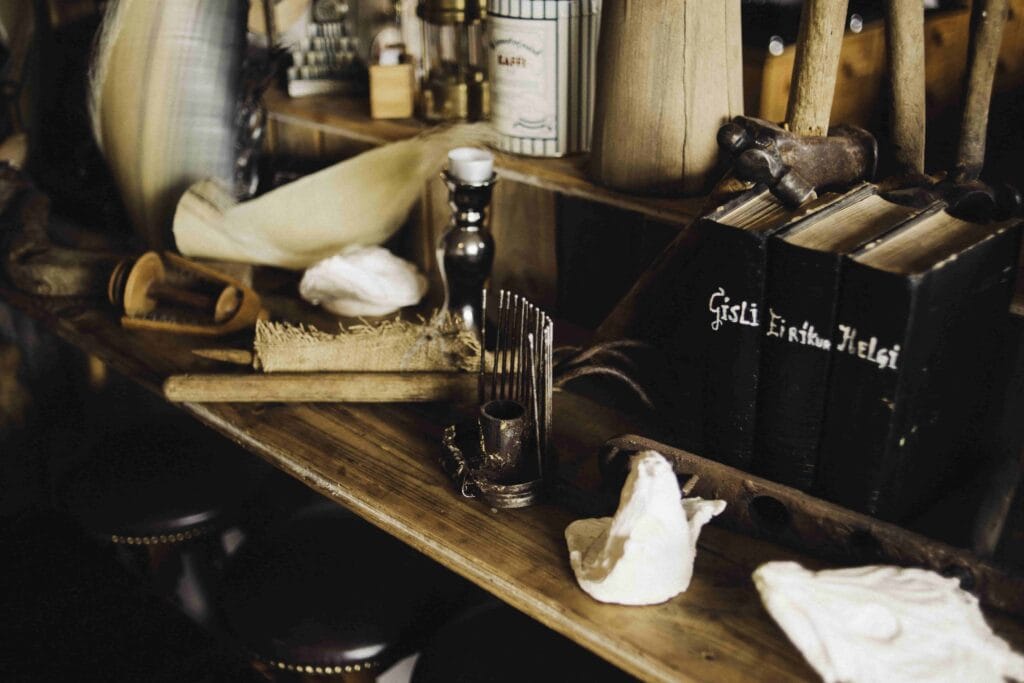
Icelandic Alphabets (32 Letters)
Icelandic alphabetic system consists of 32 letters. The English alphabet + the letters (á, æ, ð, é, í, ó, ö, þ, ú, and ý) – 4 English letters (c, q, w, and z). Icelandic is a very phonetic language. So if you are trying to learn the language, start by listening to Icelandic songs and conversations. Once you learn how to pronounce the letters, reading and writing may come easily to you.
Useful tip: Stress on the first syllable. Don’t remember English grammar while speaking. (PS: There are no silent letters in Icelandic words).
Some Interesting Facts about the Icelandic Language
1. Old Norse
Many native Icelanders can still read the old manuscripts written in Old Norse, called Sagas. The sagas are the first written document telling the Viking tales and their lives. And because Icelandic remains closest to the Old Norse, many people can read it without any trouble.
2. Icelandic Naming Committee
A strange tradition of naming convention. In Iceland, a parent can’t give their child a new name that has never been used before obtaining permission from the naming committee. The committee has a pre-approved list of names that a baby can get.
These language committees are also involved in creating new Icelandic words that never existed before. For example, there were no Icelandic words for computers. They created a new word “tolva” by combining tala (number) and volva (oracle).
3. First names are used as surnames
Across most of the cultures, the surnames convention is pretty much straight forward. The family surnames are carried over for generation after generation. But in Iceland, parent’s last names have no role in deciding children’s surnames. Children take their father’s or mothers’ first name and add –son (son) for male and – dóttir (daughter) for female. Ex- The name, Atli Björn Ólafsson, suggests that Olafur is the father of Atli Björn.
How much Icelandic should I learn before visiting?
You don’t need to learn anything to have a memorable trip to Iceland. For English speaking visitors, there is virtually no language barrier. Icelanders are taught English at their school level, and English is the second most spoken language of this North Atlantic Island. In fact, there are more English speakers in Iceland than in many Eastern European countries. However, as the saying goes – the language lets you enter the cultural realm of a visited country – it’s always nice to know at least something. Icelanders love visitors who show interest in their culture and language, why not learn some basics to flatter your hosts?
Let’s get started before you read somewhere that even the most basics words of Icelandic are hard to learn.
11 essential Icelandic words and phrases to make your visit worthwhile:
Don’t get discouraged by these strange-sounding pronunciation:
1. Góðan daginn (go-thah-n die-in): Good Day
It means ‘good day’. The most common greeting in the Icelandic language. Replace your English word ‘hello’ with Góðan daginn. Say this whenever you meet someone, it will show them that you are polite and approachable.
2. Ég heiti (go-thah-n die-in): My name is
Introduce yourself by saying Ég heiti [your name]…………. Introducing in Icelandic will surely pave the way for friendship and conversation with native Icelanders.
3. Hvar er (kva- e): Where is …?
Although chances of getting lost in Iceland are very slim, if you ever get lost you can ask the way around by saying Hvar er. You don’t need to exactly know the names of the place, locals will understand.
4. Fyrirgefðu (fih--ih--gef-thu): Sorry
The formal way of saying sorry in Icelandic is Fyrirgefðu. You can also use another word Afsakið (af-sah-kith) which also means sorry. You can use it for ‘excuse me’ also in an informal manner.
5. Þakka þér/Takk (thah-kah th-yeh- / tah-k): Thank you
Don’t get confused by the Icelandic alphabet ‘Þ’ with English ‘P’. Pronounce it like th in the word thing. Both words Þakka þér and Takk are common ways of saying thank you in Icelandic. The former one is more formal though.
6. Bless (bleh-s): Bye
This is probably the easiest to pronounce Icelandic greeting on the list! It means Bye or Goodbye. Say it twice bless-bless as you say in English, bye-bye.
7. Klósett (k-low-seht): Bathroom/toilet
This is probably a must know-word. By knowing this word you can easily locate the restrooms either by reading signs or asking.
8. Hæ/ Halló (Hi/ Hah-low): Hello
The generic greetings: Hæ and Halló mean the same as in English word hello. The former is more common and often takes repetition Hæ-Hæ.
9. Hversu mikið kostar þetta? (kve-su mih-kith coh-stah- theh-tah): How much does this cost?
Want to buy a souvenir for your loved ones, this is the handy Icelandic phrase that will help you to bargain with the shopkeepers.
10. Kvitun (kv-ih-tuhn): Receipt
If you want to ask receipt for your purchase, just say the word ‘Kvitun’. And once you receive it, don’t forget to say Takk (thanks).
11. Já/ Nei (y-ow / ney): Yes/No
Although it may sound rudimentary, these two are essential vocabularies you must learn.
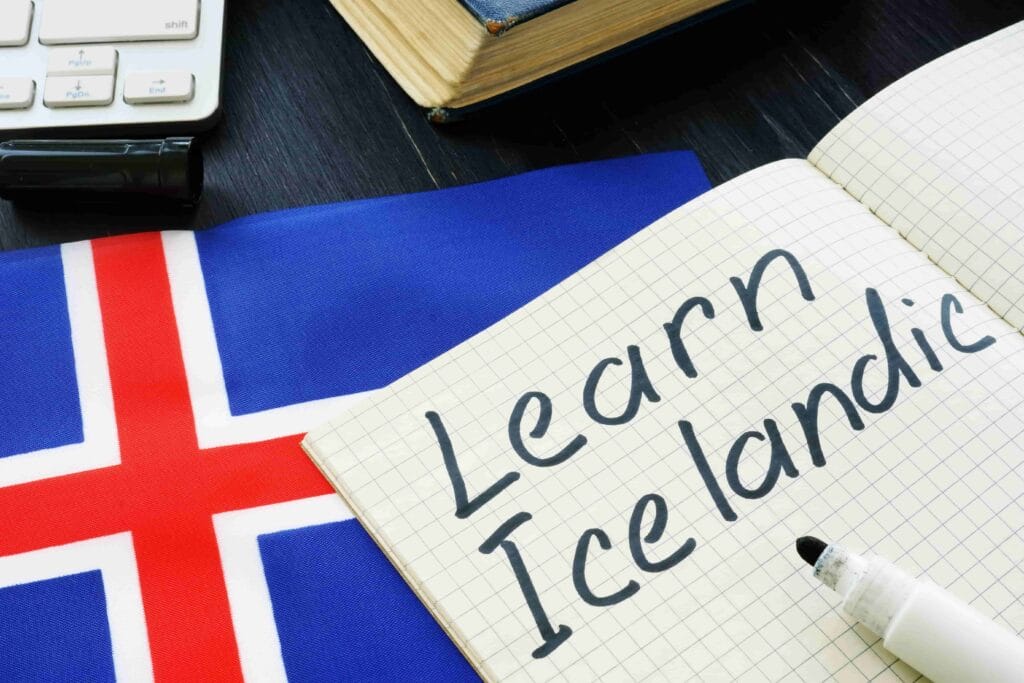
Essential Icelandic vocabulary for money-related terms
Why not buy something special in Iceland with your bargaining skills? Once you know the Icelandic numbers and some phrases, you could perhaps buy a nice souvenir such as volcanic rock jewelry or a bottle of Brennivin. Just remember that you do not have to leave a tip for their services. Everything is included in the price you pay. Let’s first learn Icelandic numerals.
Numbers
Icelanders have perhaps the most unique numerals. Each number has three different writing and pronunciation indicating m = masculine, f = feminine, n = neuter. Don’t get surprised when an Icelander pronounces the numeral 6 as sex. The Icelandic numerals 1 to 10 are enough to get your shopping spree easy in Reykjavik. Following is a tabular representation to make things a bit easier for you:
Number | Icelandic word |
0 | Null |
1 | einn (m), ein (f), eitt (n) |
2 | tveir (m), tvær (f), tvö (n) |
3 | þrír (m), þrjár (f), þrjú (n) |
4 | fjórir (m), fjórar (f), fjögur (n) |
5 | fimm |
6 | sex |
7 | sjö |
8 | átta |
9 | níu |
10 | tíu |
Some useful phrases:
- How much does this cost? – Hvað kostar þetta (mikið)
- Open – Opið
- Closed – Lokað
- I would like to buy … – Ég mundi vilja kaupa …
- Do you accept credit cards? – Takið þið við krítarkortum?
Essential Icelandic words for travel
As stated earlier, you won’t need to know Icelandic to travel to this country. But a little knowledge of essential phrases will certainly make the travel a lot easier. Here are some of the most common Icelandic travel words and phrases you should probably know:
- Where is …? – Hvor er …?
- One ticket to …, please – Einn miða til …, (takk fyrir).
- Where are you going? – Hvert ertu að fara?
- Bus – Strætisvagn
- Bus station – Umferðarmiðstöð
- Airport – Flugvöllur
- Departure – Brottför
- Arrival – Koma
- Car Rental Agency – Bílaleiga
- Hotel – Hótel
- Room – Herbergi
- Reservation – Bókun
Icelandic words for landscapes:
- Brú: Bridge
Examples: Skeiðarárbrú or Borgarfjarðarbrú (Iceland’s longest and second-longest bridge in Iceland, respectively).
- Dalur: Valley
Example: Laugardalur in Reykjavik
- Ey/Eyja: Island
Examples: Drangey, Grimsey, Heimaey, and Surtsey. The world-famous volcano which caught the world’s attention in 2010, Eyjafjallajokull, has the prefix Eyja which means island mountain glacier.
- Fjörður: Fjord
Examples: Hafnarfjörður, Borgarfjörður, Westfjörður, and Seydisfjordur.
- Foss: Waterfall
Examples: Gullfoss (also known as Golden waterfall), Skogafoss, Svartifoss, Kirkjufoss
- Jökull: Glacier
Examples: Vatnajökull (Europe’s largest glacier in terms of volume), Solheimajökull
Some Recommendations That Will Help You Learn
If this article has intrigued a curiosity in you, there are plenty of learning resources and books which will help you to learn the Icelandic language. And who knows if you will be reading Icelandic Sagas in the original Norse language anytime soon.
Books
- Complete Icelandic: A Teach Yourself Guide by Hildur Jonsdottir
- Colloquial Icelandic: The Complete Course for Beginners by Daisy L. Neijmann
Apps
- Drops (Android and iOS)
This set of Icelandic words provided in this article are more than enough for a short vacation. Now that you have acquired some of the basics of the Icelandic language, you will be able to embark on your adventures with much ease and more confidence. Go visit the earth’s most wonderful island of Ice and Fire!
Gangi þér vel for your Icelandic adventure!
